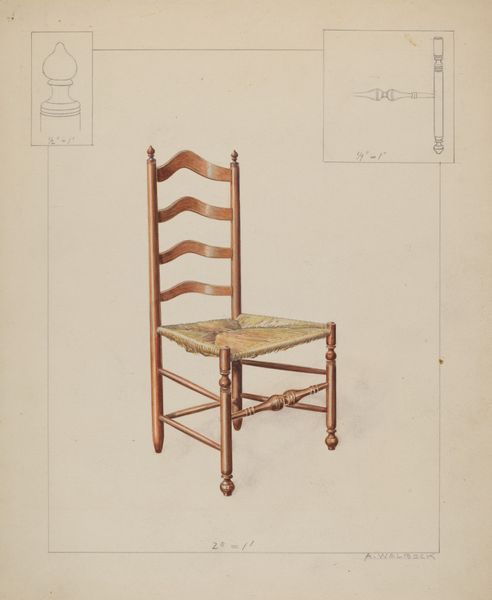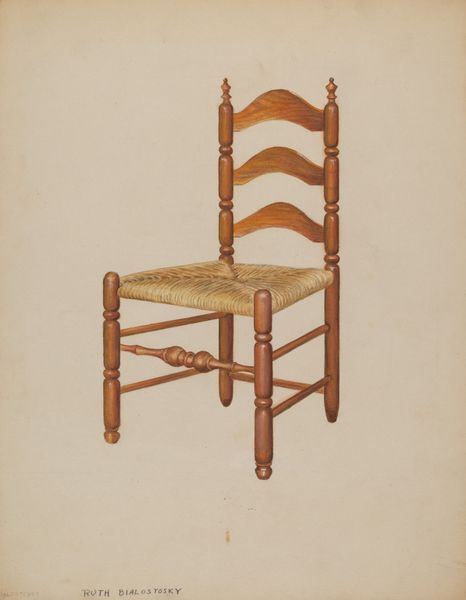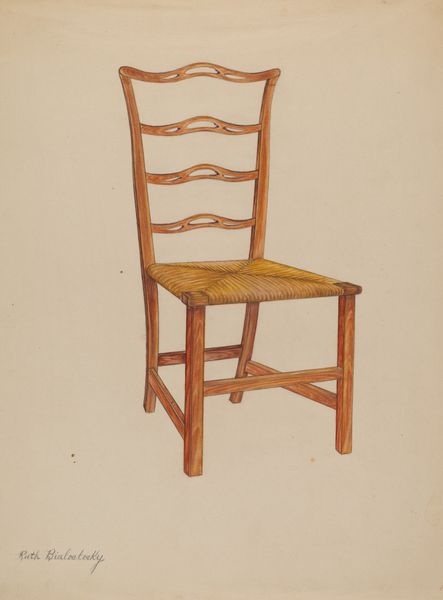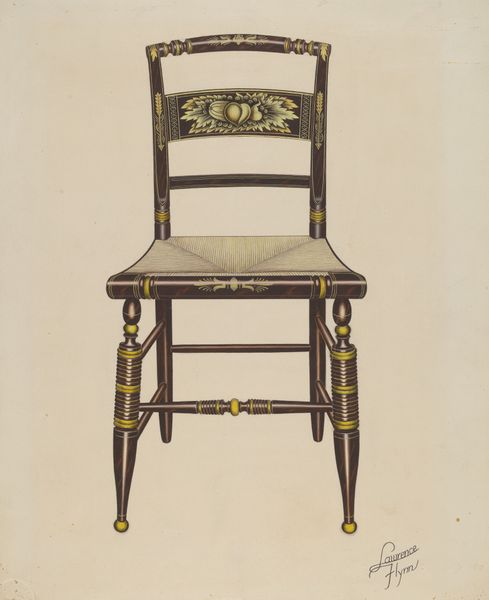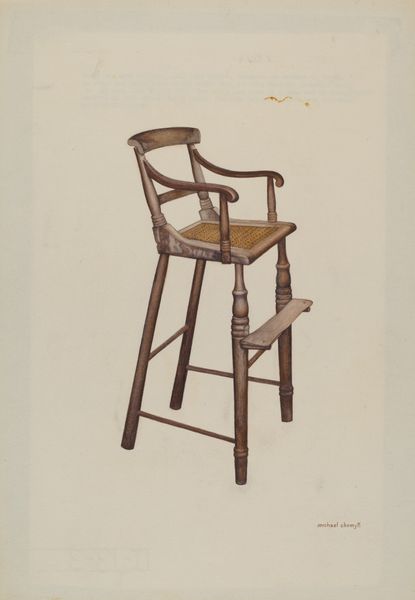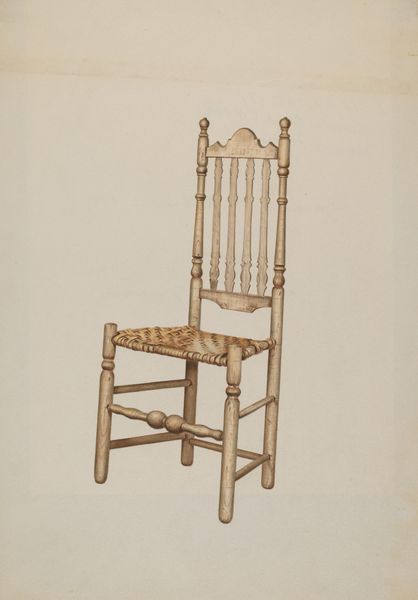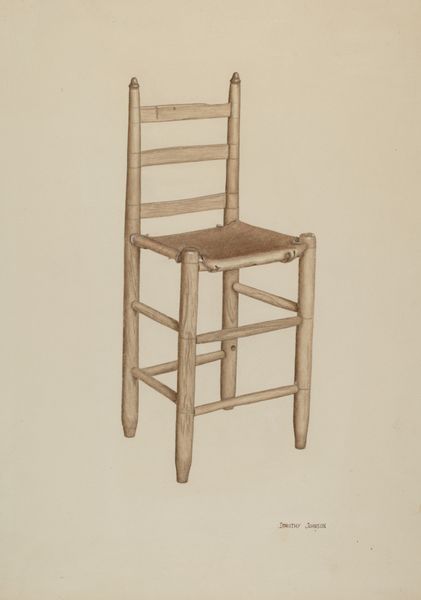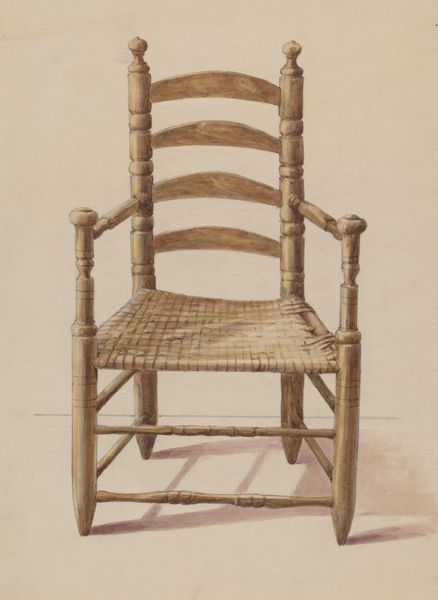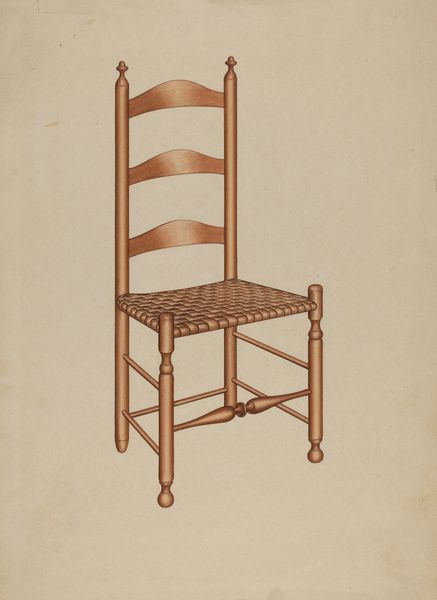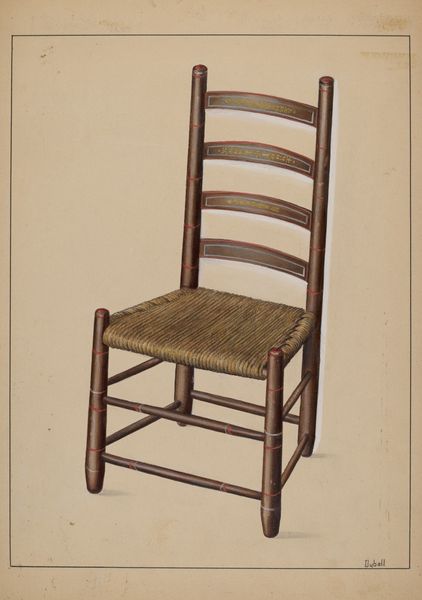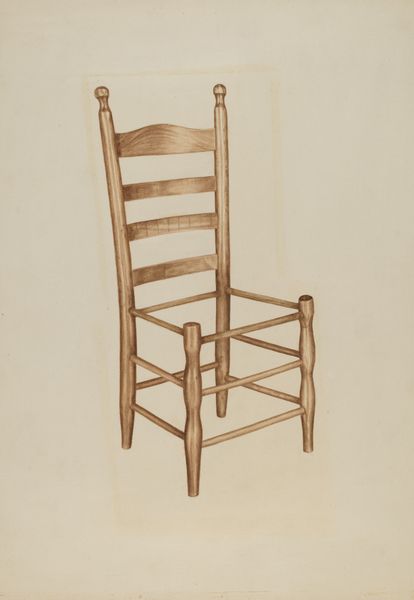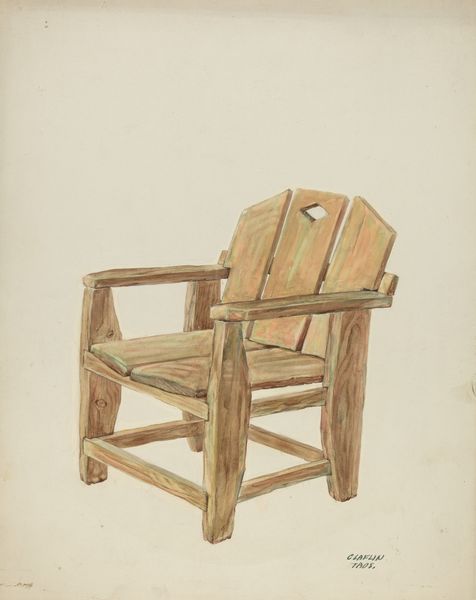
drawing, paper, watercolor
#
portrait
#
drawing
#
paper
#
watercolor
#
academic-art
Dimensions: overall: 35.8 x 25.4 cm (14 1/8 x 10 in.) Original IAD Object: 45"high; 28 1/4"wide; 29"deep
Copyright: National Gallery of Art: CC0 1.0
Editor: This is "Chair," a watercolor and drawing on paper, created around 1937 by Natalie Simon. I find it so interesting that she combines the detailed blueprint on the upper left, with a sort of 'finished product' rendering down below. What do you see in this piece? Curator: It is indeed a fascinating combination! This piece speaks volumes about the intersection of design, craft, and social values in the 1930s. The detailed sketch suggests a technical drawing, hinting at the industrial design ethos gaining traction. This reflects the increasing emphasis on functionality and mass production influencing even artisanal crafts. We see both the precision of design and the hand of the artist here. Editor: So, the inclusion of both versions really places the object in its historical moment? Curator: Precisely. This chair isn't just furniture; it's a statement. Think about who this chair might have been designed for. The austerity of the design suggests functionality, but the subtle decorative elements—the curved arms, the patterned lower edge—point toward a desire for elegance. Consider also how access to well-designed and crafted furniture impacted the quality of everyday life. Was this intended as a democratizing piece? Editor: That's a really interesting question to consider; maybe a step toward modern design accessible to a broader public? I hadn't thought about it that way! Curator: Exactly! Art, even functional objects, participates in a much wider cultural conversation about taste, class, and societal ideals. By understanding the social and economic conditions of the time, we can interpret this seemingly simple "Chair" as a complex artifact embedded in a specific historical narrative. Editor: I really appreciate this new perspective; thinking about art as connected to these complex power dynamics of accessibility helps open new doors to understanding art! Curator: My pleasure; viewing art with attention to social and political history can be remarkably insightful, transforming how we engage with visual culture and everyday objects.
Comments
No comments
Be the first to comment and join the conversation on the ultimate creative platform.


